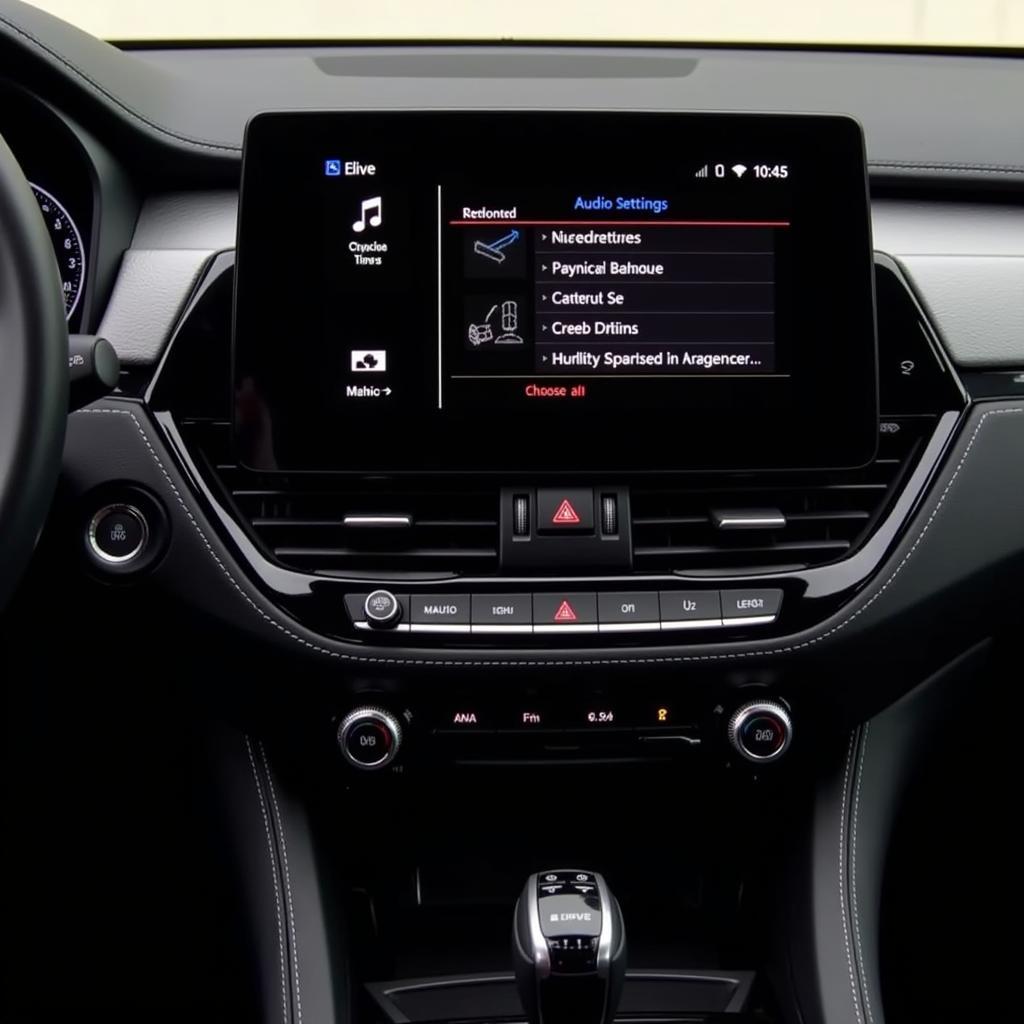The unmistakable sound bmw m5 v10 is more than just engine noise; it’s a symphony of mechanical precision, a testament to German engineering, and a visceral experience that leaves drivers breathless. This article dives deep into the captivating world of the BMW M5 V10 engine’s sound, exploring its origins, unique characteristics, and the technological marvel behind its intoxicating roar.
Decoding the Roar: What Makes the BMW M5 V10 Sound So Unique?
The BMW M5 V10, specifically the S85 engine found in the E60 generation, stands as a high-water mark in naturally aspirated engine design. Its unique sound signature stems from a combination of factors, each meticulously engineered by BMW’s M division. bmw m5 e60 v10 sound The engine’s high-revving nature, peaking at a staggering 8,250 rpm, is a major contributor. This, coupled with the ten cylinders working in harmony, creates a dense and complex sound wave, unlike anything produced by a typical V8 or V6.
The individual firing pulses of each cylinder overlap, creating a smooth, continuous wave of sound that builds to a crescendo as the revs climb. This is further enhanced by the engine’s equal-length exhaust manifolds, which ensure optimal gas flow and contribute to the balanced and harmonious sound.
The Science of Sound: Engineering the Perfect BMW V10 M5 Sound
The development of the S85 engine was a meticulous process, with sound engineering playing a crucial role. BMW’s engineers utilized advanced acoustic modeling and testing to refine the exhaust note, ensuring it delivered the perfect blend of aggression and refinement. The exhaust system itself is a work of art, featuring carefully tuned resonators and mufflers that sculpt the sound waves to produce the desired effect. bmw v10 m5 sound Every component, from the intake manifold to the exhaust tips, plays a role in shaping the final sound.
Why does the BMW M5 V10 sound like an F1 car?
The sound bmw m5 v10 often draws comparisons to Formula 1 cars. This is due to the S85’s high-revving nature and the distinctive wail produced at high RPMs, reminiscent of the screaming V10 engines that dominated F1 in the early 2000s. The lightweight construction and individual throttle bodies for each cylinder further contribute to this F1-like sound characteristic.
“The S85’s sound is a masterpiece of engineering,” says renowned automotive acoustician, Dr. Hans Zimmer. “It’s a visceral experience that connects the driver to the heart of the machine.”
Experiencing the Sound: BMW M5 V10 Sound Tunnel
The best way to truly appreciate the sound bmw m5 v10 is to hear it in person. Many enthusiasts seek out opportunities to experience the sound in a controlled environment, such as a sound tunnel or dyno test. bmw e60 m5 v10 sound These settings allow for a focused listening experience, free from the distractions of the road.
What does the BMW M5 V10 sound like at different RPMs?
At lower RPMs, the sound bmw m5 v10 is a deep, rumbling purr. As the revs climb, the sound transforms into a high-pitched wail, reaching a crescendo at the 8,250 rpm redline. bmw m5 v10 f1 sound The transition is seamless and exhilarating, offering a unique auditory experience at every point in the rev range.
“There’s nothing quite like the feeling of unleashing the full fury of the S85,” says veteran automotive journalist, Emily Carter. “It’s a truly unforgettable experience.”
Conclusion: The Enduring Legacy of the Sound BMW M5 V10
The sound bmw m5 v10 remains a benchmark in automotive acoustics. It represents a time when naturally aspirated engines reigned supreme, offering a raw and unfiltered connection between driver and machine. bmw m5 v10 sound tunnel While modern turbocharged engines offer impressive performance, they often lack the visceral character and emotional connection of their naturally aspirated predecessors. The S85’s legacy lives on, a testament to the power of sound and the enduring appeal of a truly special engine.
FAQ:
- What engine is in the E60 M5? The S85 V10.
- What is the redline of the S85 engine? 8,250 rpm.
- Why is the S85 sound so unique? Its high-revving nature, ten cylinders, and meticulously engineered exhaust system.
- Is the S85 engine reliable? With proper maintenance, yes.
- Can the S85 sound be replicated? Not easily. Its unique character is difficult to duplicate.
- What makes the BMW M5 V10 sound like an F1 car? Its high-revving nature and individual throttle bodies for each cylinder contribute to the F1 car sound.
- Where can I best hear the BMW M5 V10 sound? In person, preferably in a tunnel or on a dyno.
Need assistance? Contact us via Whatsapp: +1 (641) 206-8880, Email: CARDIAGTECH[email protected] or visit us at 276 Reock St, City of Orange, NJ 07050, United States. We offer 24/7 customer support. Explore more related articles on our website about BMW M5 performance upgrades and maintenance tips. Check out our detailed guide on S85 engine diagnostics and troubleshooting.


